Vatican Chapels steal the glory at the Venice Architecture Biennale
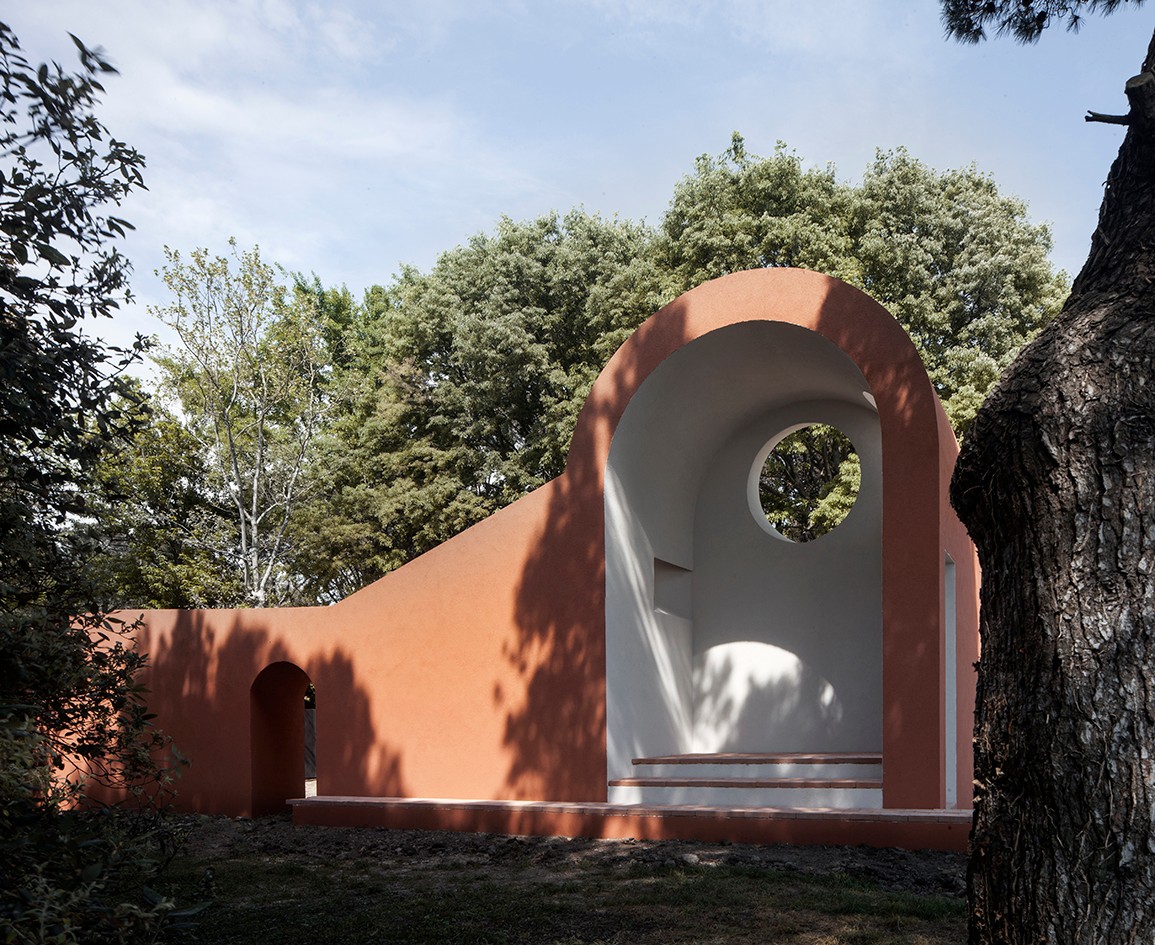
Expectations ran high for the Vatican’s debut at the 16th Venice Architecture Biennale. And call it divine intervention or curatorial genius, but ‘Vatican Chapels Pavilion of the Holy See’ undoubtedly stole the show, proving to be the most talked about project of the opening week.
Its tranquil location away from the madding crowds helps. Laid out among the woodland of San Giorgio Maggiore Island, it felt like a pilgrimage of sorts, a voyage of discovery with a multiplicity of offerings evoking a mini-Giardini of its own – but a garden united in its devotion to simplicity, contemplation and prayer rather than the grandiose gestures of competing national pavilions.
Curated by Professor Francesco Dal Co, Italian architecture historian and editor of Casabella magazine, the project consists of ten pavilions by ten different practices from across the globe with whom Dal Co has paired a variety of manufacturers to produce radically different designs. The roster of names ranges from heavyweights such as Sir Norman Foster and Eduardo Souto de Moura to Chilean architect Smiljan Radic, creator of the 2014 Serpentine Pavilion, and Paraguayan architect Javier Corvalán. Each was given carte blanche to design ‘without any reference to commonly recognised canons’.
The project’s starting point was Gunnar Asplund’s seminal Woodland Chapel, built in 1920 in Stockholm’s Woodland Cemetry, and specifically his theme of the chapel as ‘a place of orientation, encounter, meditation and salutation’. This is clearly explained in a concise exhibition featuring Asplund’s original drawings inside the first chapel that visitors encounter – an elegant shingle hut designed by Francesco Magnani and Traudy Pelzel in collaboration with Alpi Wood.
Although a fan of gravel paths cut through the site from Palladio’s Cloister towards the lagoon, visitors are encouraged to meander off through the trees like protagonists in a fairy tale, stumbling across each diverse construction, which often elicit audible gasps as views unfold. Sense of adventure and bucolic setting aside, it is the simplicity of the concept – the sole unifying feature of them all is an altar and lectern – and the broad spectrum of the architects’ response that is at the heart of this project’s universal appeal.
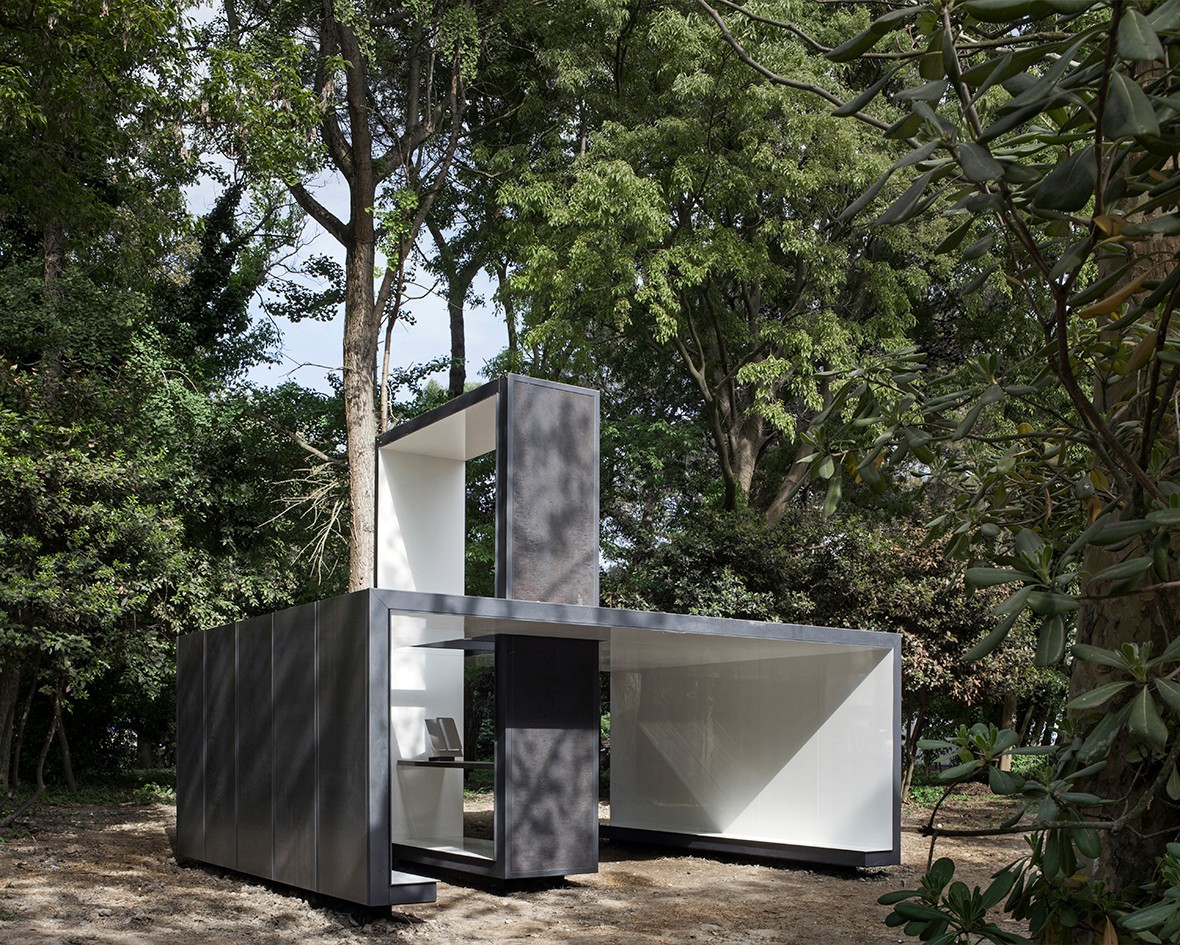
‘Not a project; a reflexion’ by Francesco Cellini was created in collaboration with Panariagroup
There is something for everyone, even atheists – with several participating architect non-believers, such as Italian architect Francesco Cellini whose ‘Not a project; a reflexion’ focuses on the architectural meaning of sacred spaces with his abstract open composition of two intersecting rectangles.
Also, perhaps, Portuguese architect Eduardo Souto De Moura. The title of his low monolithic honey-coloured Vicenza stone structure is ‘No, it is not…’ suggesting a meditative space rather than something sacred. Inside, a cross appears as the slenderest cut in the stone. ‘It is not a chapel, not a sanctuary and in any case, not a tomb. It is simply a place enclosed by four stone walls, while another stone at the centre might be the altar,’ he says.
Wallpaper* Newsletter
Receive our daily digest of inspiration, escapism and design stories from around the world direct to your inbox.
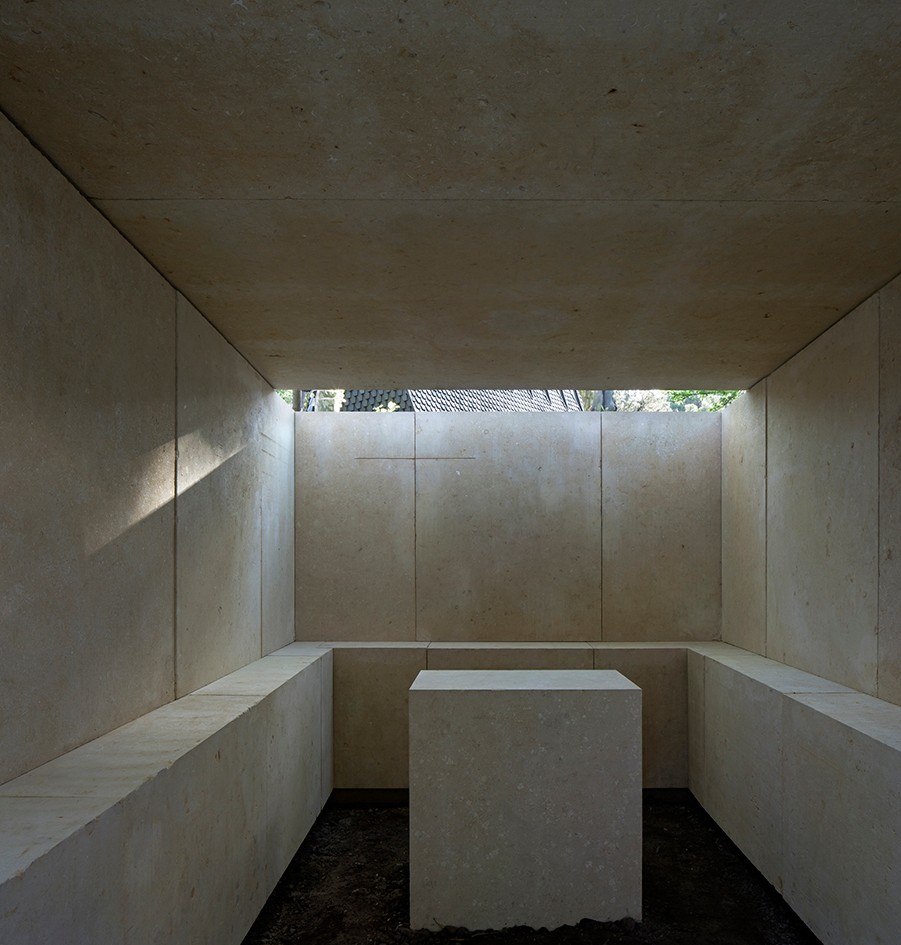
Eduardo Souto de Moura, who is known for his use of stone, created a simple low-lying chapel
Foster’s open-air timber chapel, ‘Crosses morphed into a Tensegrity Structure’, is likely to become the star attraction. Situated between two mature trees, the apse faces onto the lagoon. Inside, visitors can ponder on pebble-like wooden benches. Foster worked with Tecno and Maeg to realise his vision, composed of a timber bridge with a canopy created by a series of cross-shaped pylons clad in timber. On a tour of the project, the British architect called it an ‘incredible endeavour that started with the transition of the first idea of a membrane into a timber grillage’.

Foster received a ‘papal dispensation’ awarded by Cardinal Ravesi at the opening ceremony of the Vatican Chapel
Foster’s is already at one with the landscape, with floral creepers winding up around the timber struts. Environmental impact is minimal, with many of the pavilions barely touching the ground, and yet they also embrace the landscape. De Souta’s incorporates a tree. Sean Godsell’s ‘Relocatable Chapel’, designed as a dynamic portable entity, incorporates a perimeter of low grasses in the design. Meanwhile, Javier Corvalán’s timber Nomadic Chapel is a cross-section of a cylinder, only supported by tripod constructed from Venetian bricola sunk into the ground, the shadow of a cross thrown onto the grass by the sun.

Javier Corvalán’s timber Nomadic Chapel, a circle of timber, appears to unfold in the forest
Most uplifting is ‘The Morning Chapel’ by Barcelona architects Ricardo Flores and Eva Prats in a pleasing Venetian shade of burnt sienna. Devised as a meeting place and shelter, the modernist chapel is conceived as ‘an excavation in a wall’, but like a Barbara Hepworth sculpture is riddled with apertures that create different aspects and contrasts of light and shade. On the eastern edge of the island, it catches the first light of the day. ‘The first sunlight becomes visible through a ray of light that trespasses a circular hole in its wall. The Morning Chapel, catching the sunlight on its walls, and the island forest, a continuous canopy in darkness, together establish a quiet place, an invitation to sit alone or in a group,’ say the architects.
All the chapels have been constructed to enable relocation following the Biennale, but it’s hard to imagine a more spiritual setting than this.
See all the latest news and stories from Venice Architecture Biennale here
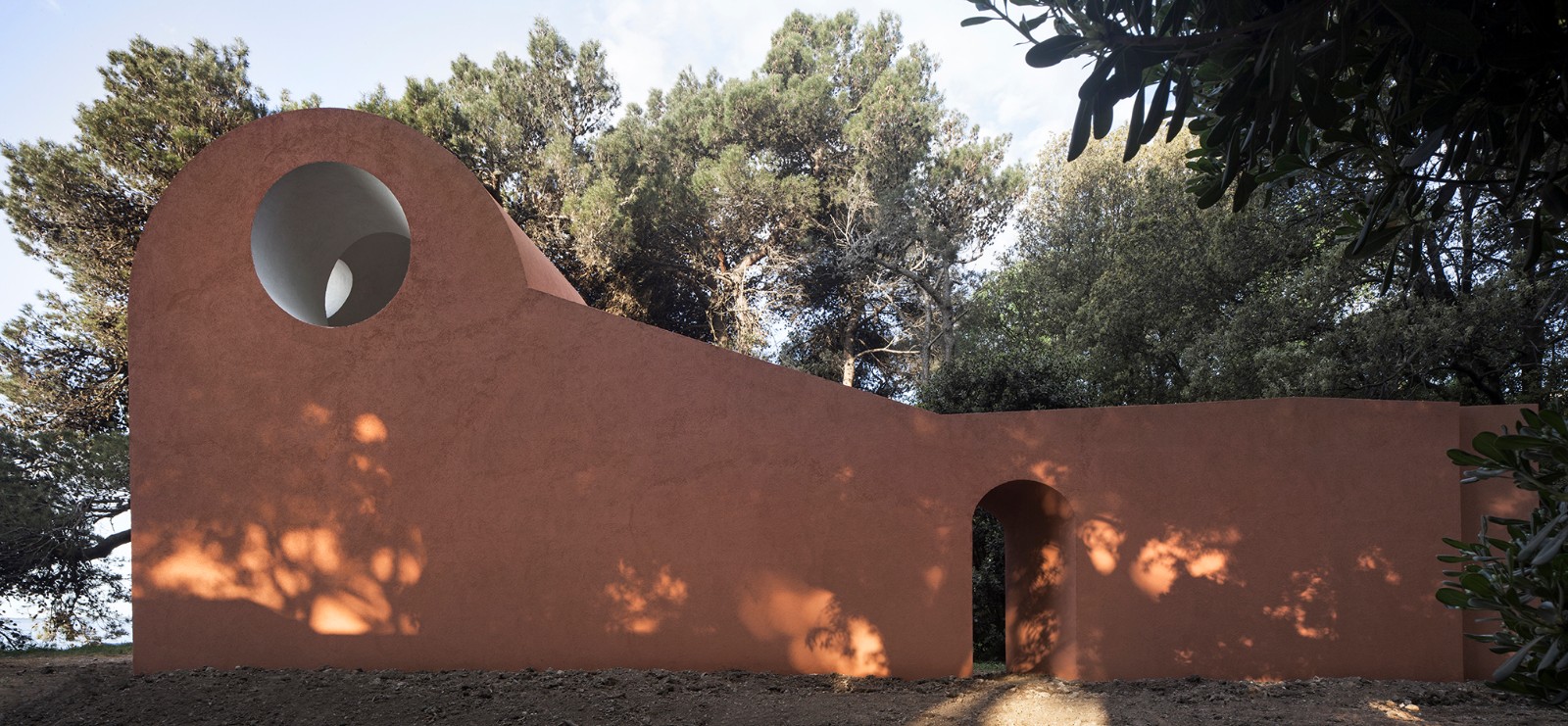
Presented as a wall parallel to a path Flores Prats’ ‘The Morning Chapel’ has a door inviting visitors to enter the forest.
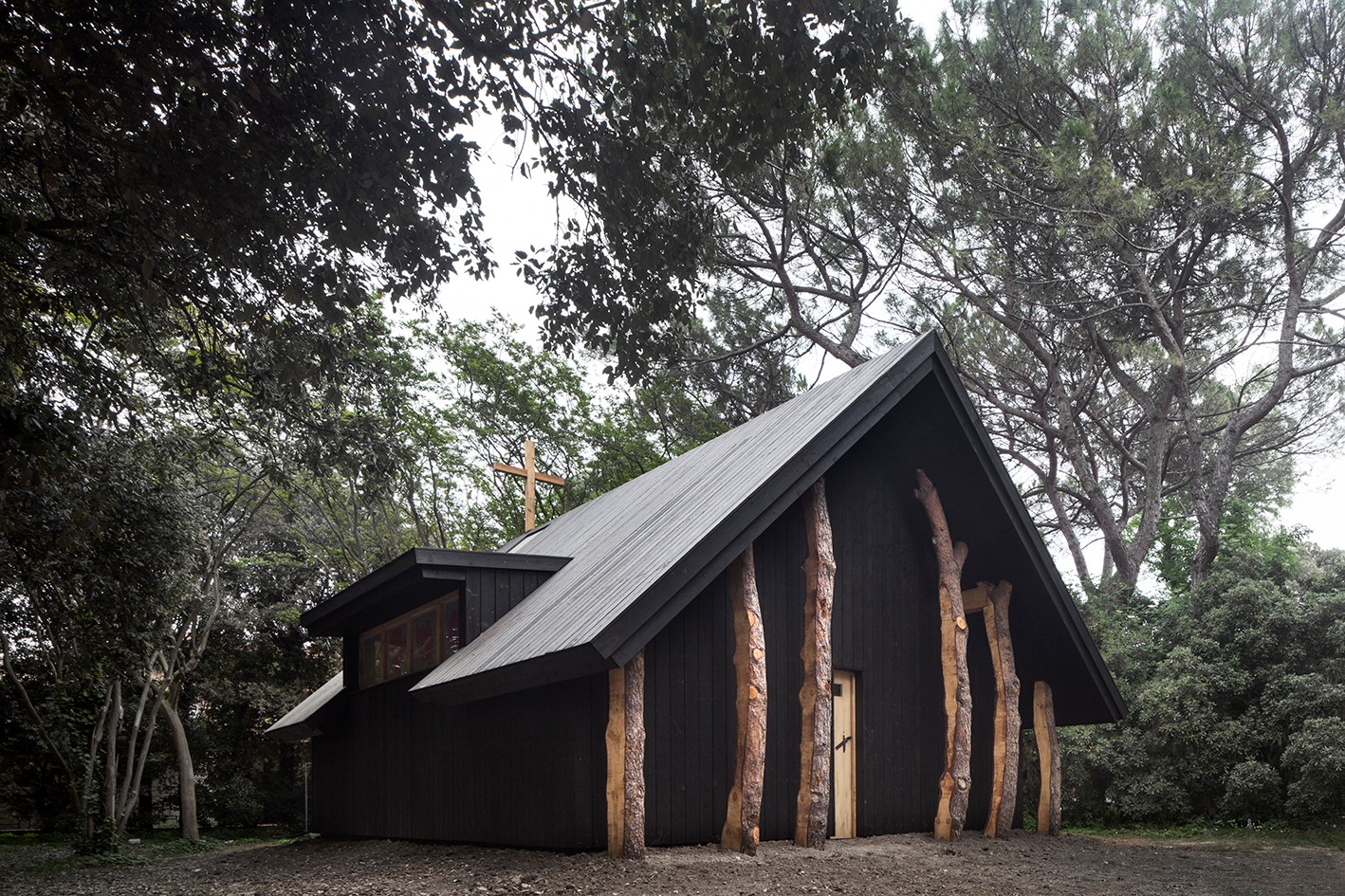
Japanese architect Terunobo Fujimori’s ‘Cross Chapel’ is a ‘stable-like’ building with a narrow door, to inspire ‘the sensation of the ascension of the Son of God when they see the cross’.
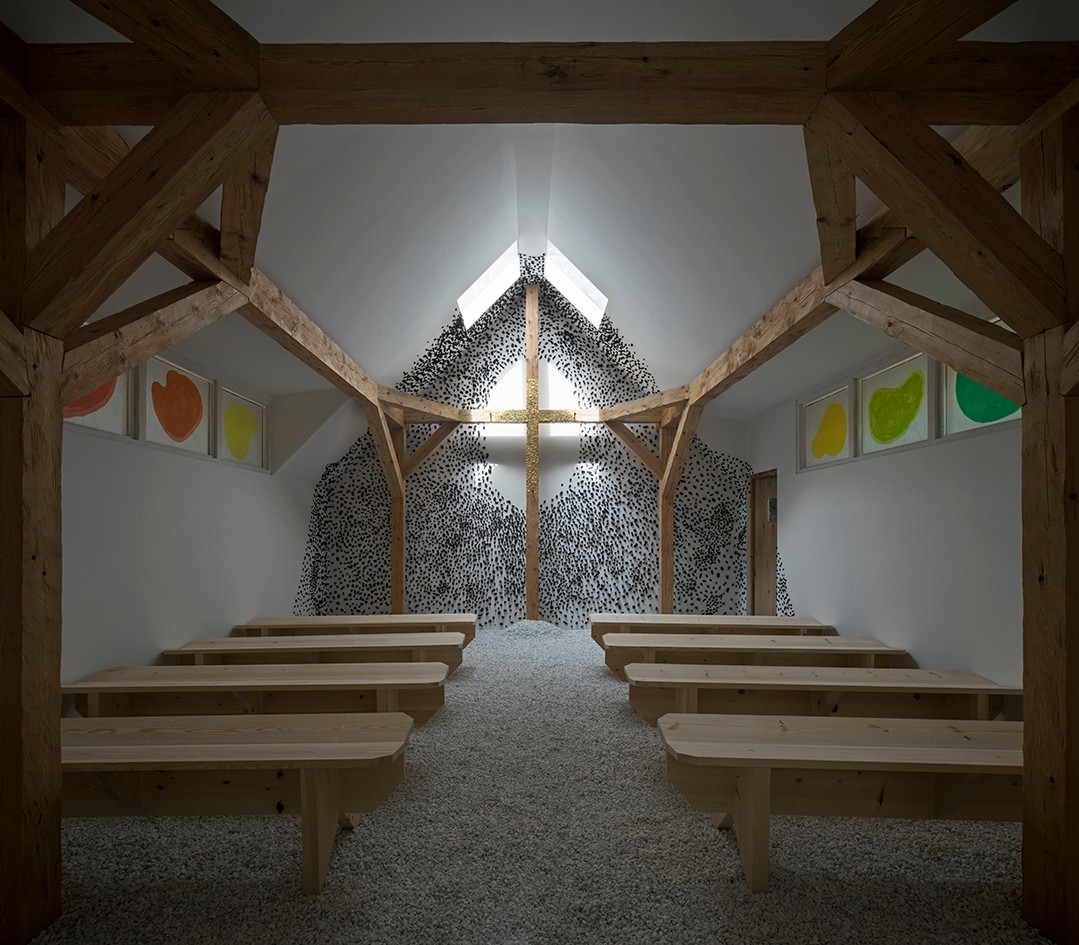
The altar wall of Terunobo Fujimori’s ‘Cross Chapel’ features charcoal pieces embedded in the plaster, around the cross remains white to emphasise the gilded part.
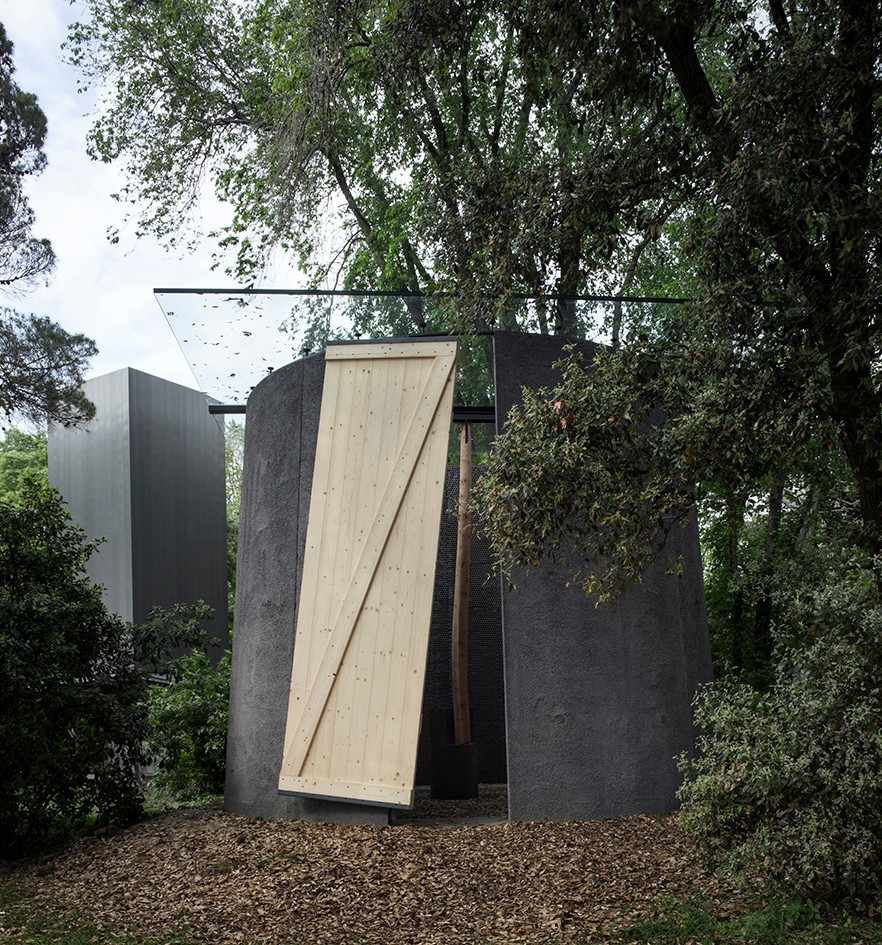
Chilean architect Smiljan Radic’s ‘A chapel as a roadside shrine’ is made with Moretti from pre-fabricated reinforced concrete.
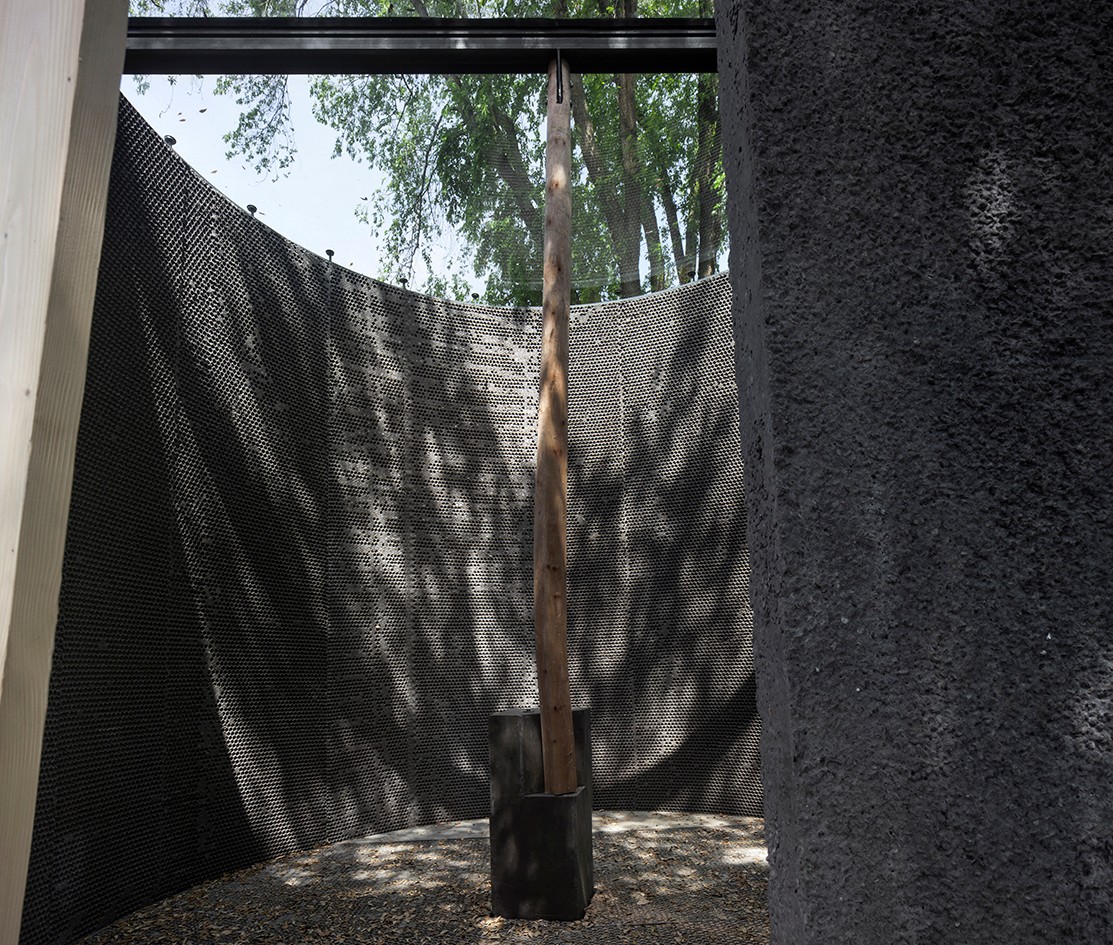
Radic’s cylindrical chapel features plays with scale mixing the monumental with the domestic.
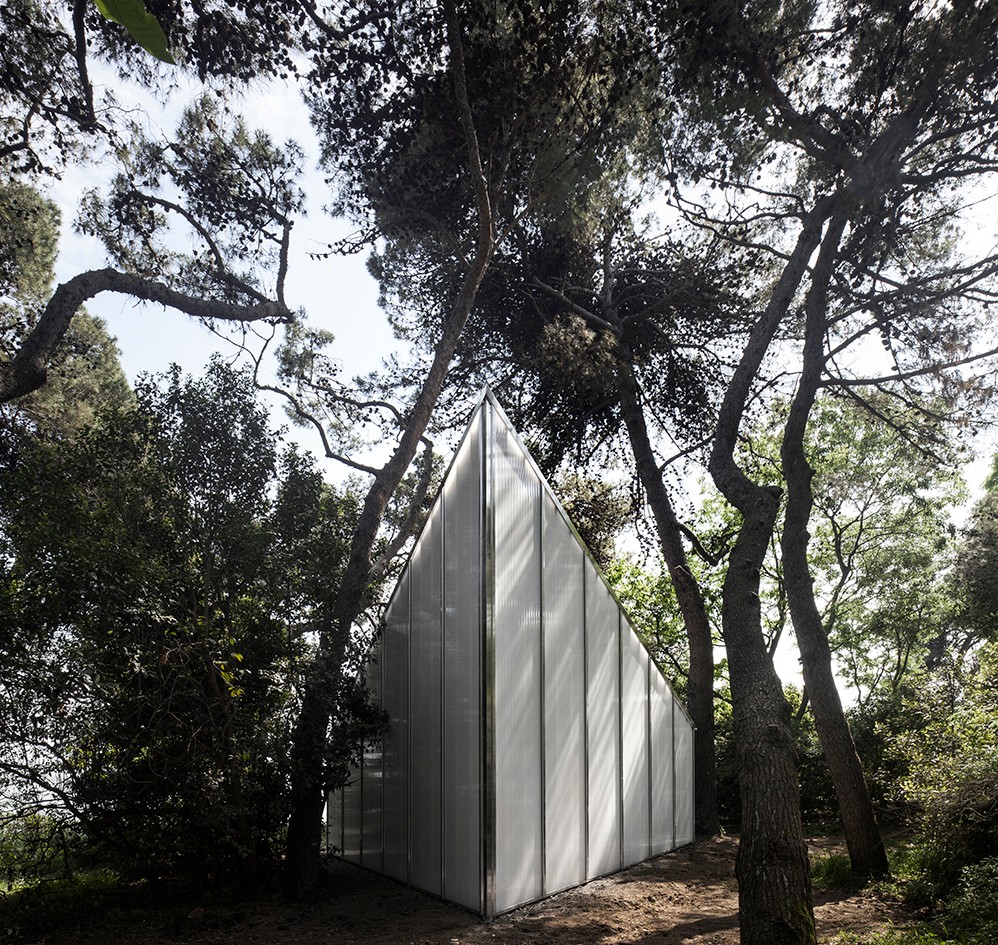
US architect Andrew Berman ‘A precise form of anonymous origin’ chapel, created with Moretti and Terna.
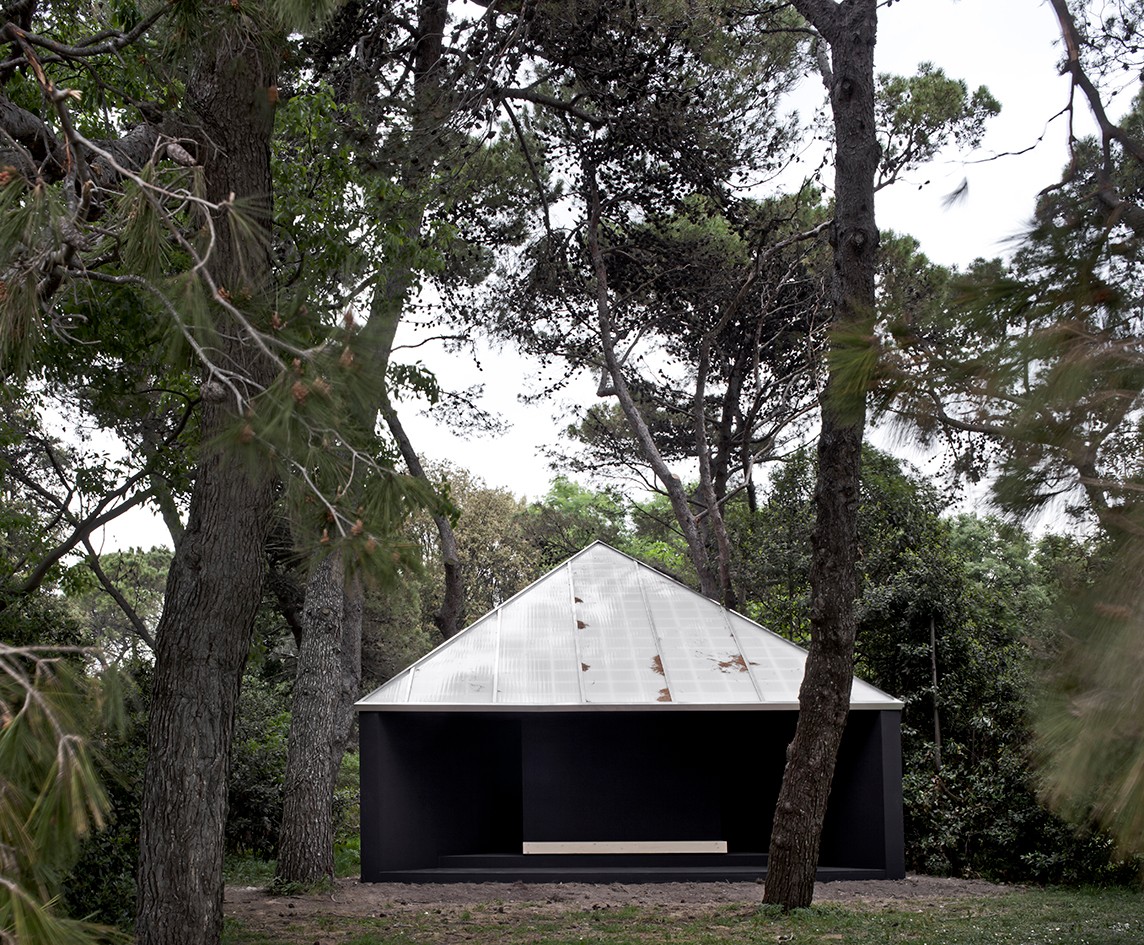
The interior of Berman’s chapel is lined in black painted plywood.
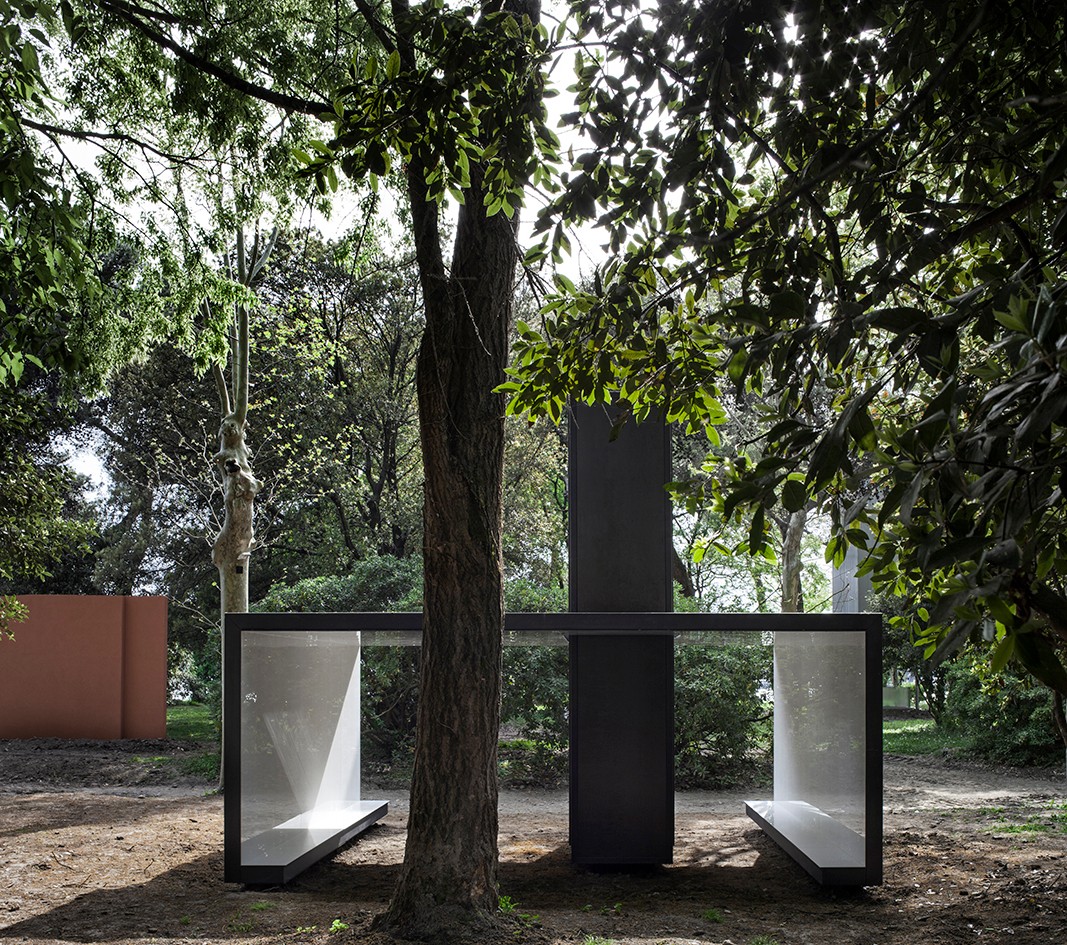
Italian architect Francesco Cellini’s ‘Not a project; a reflexion’.
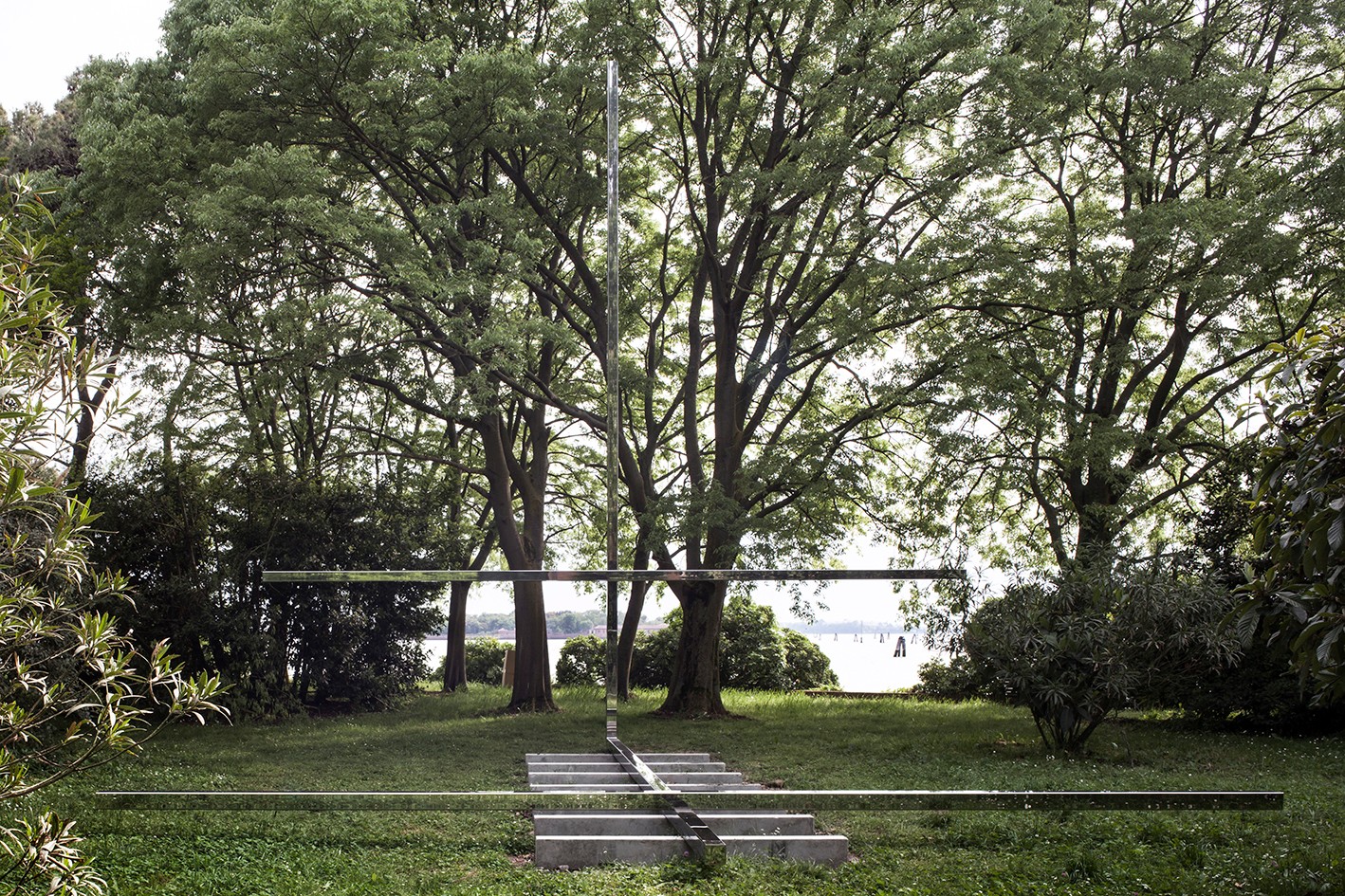
Brazilian architect Carla Juaçaba’ ‘A bench and cross’ for the Vatican Chapels, created with Secco Sistemi.
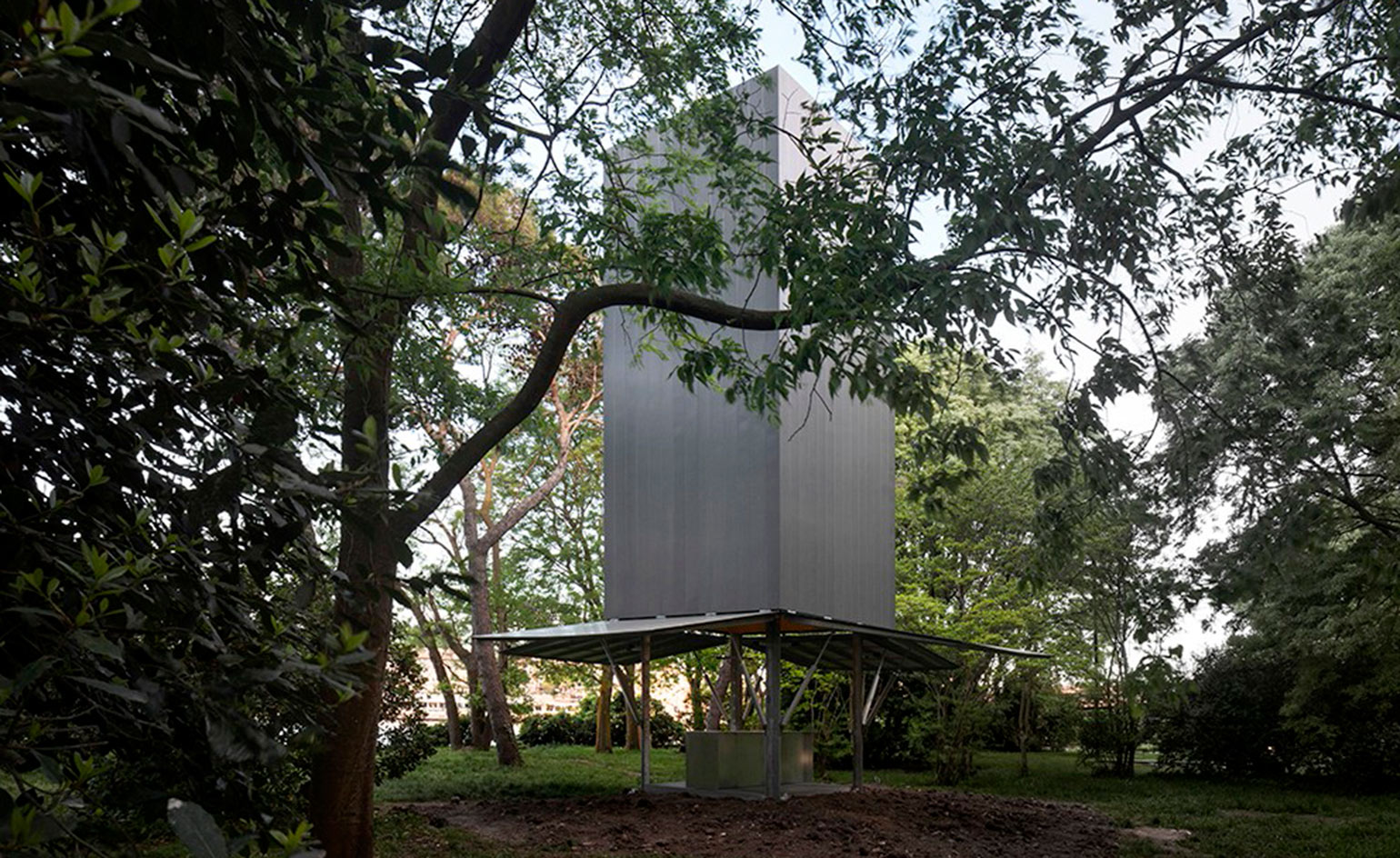
Australian architect Sean Godsell’s portable ‘A dynamic entity capable of surviving thousands of kilometres away’ was created with Maeg and Zintek
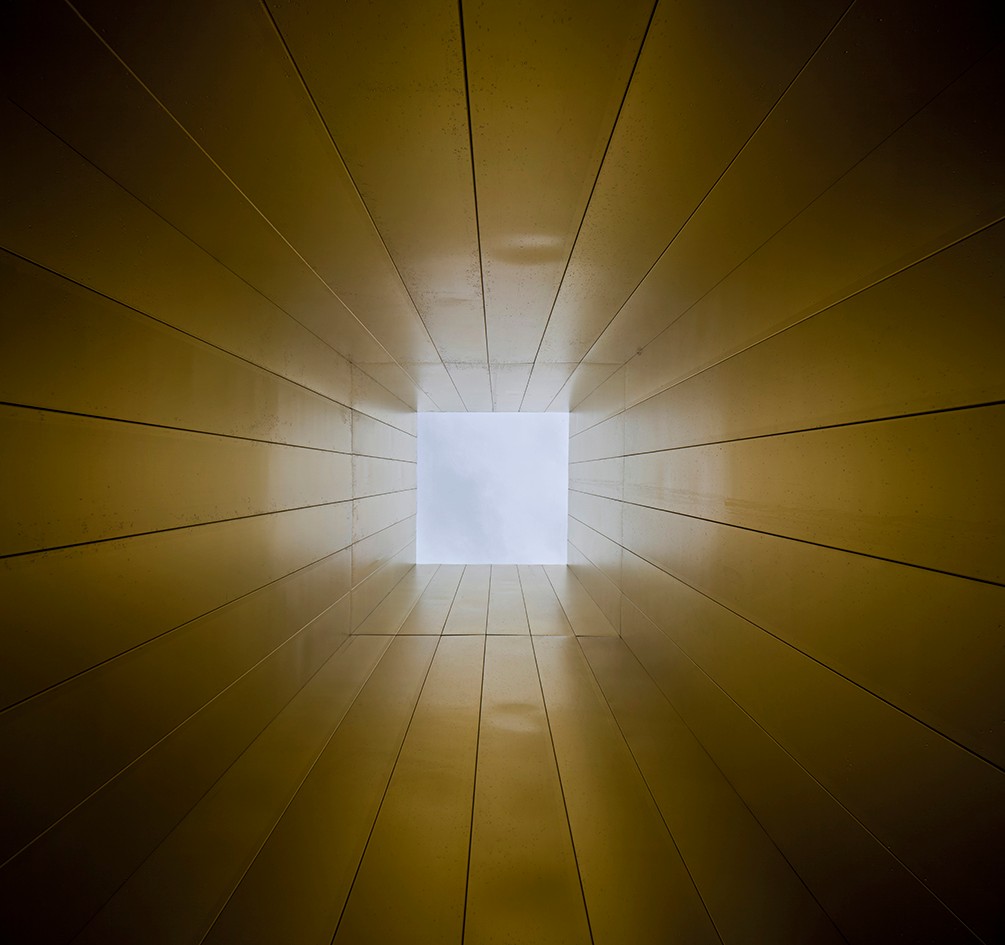
Godsell’s chapel features a golden interior, the reflective surface creating a cross
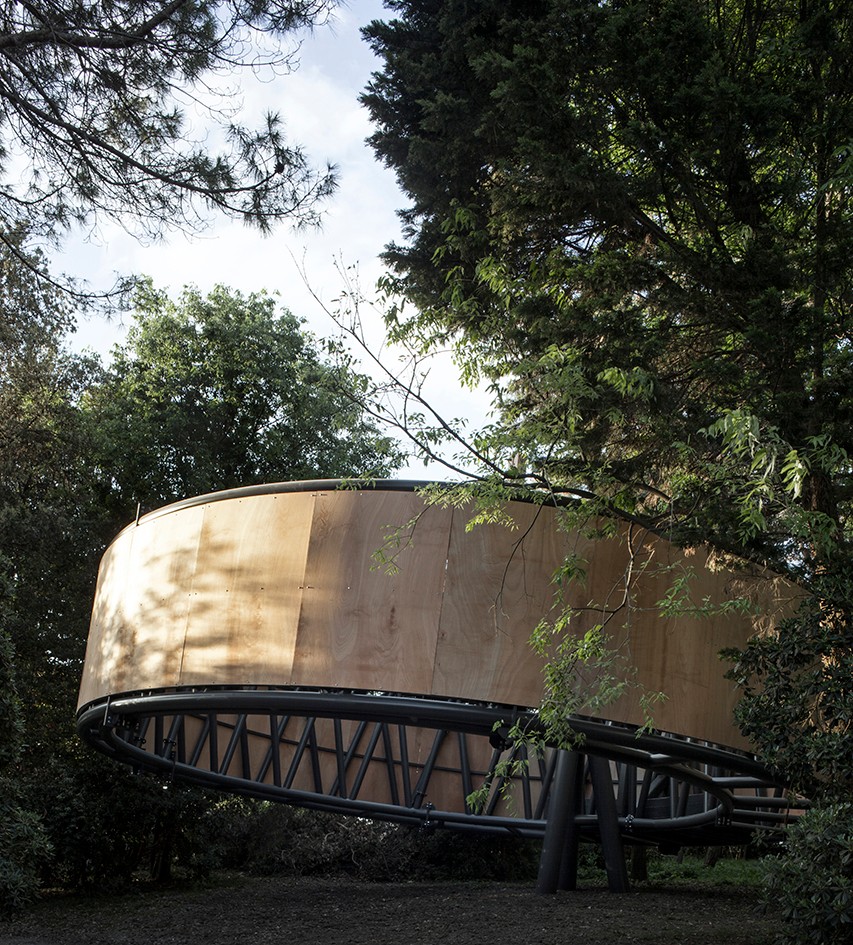
Paraguayan architect Javier Corvalán’s ‘A nomadic chapel’ was created with Simeon Structure & Facade System
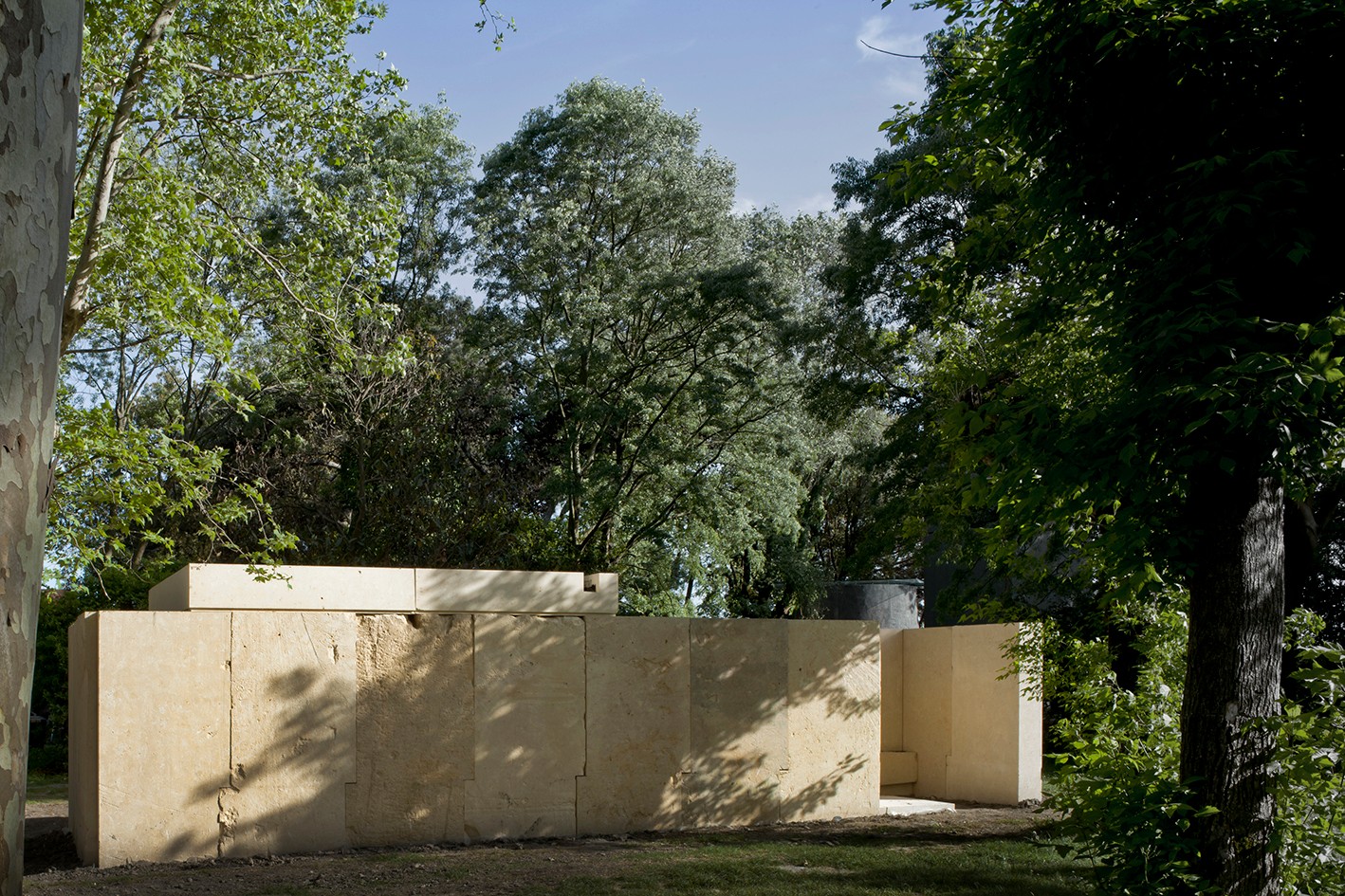
Portuguese architect Eduardo Souto de Moura’s ‘No, it is not...’ is built from blocks of Vicenza stone
INFORMATION
Vatican Chapels Pavilion of the Holy See is on as part of Venice Architecture Biennale until 25 November
Address:
Island of San Giorgio Maggiore
Venice
Italy
-
 Marylebone restaurant Nina turns up the volume on Italian dining
Marylebone restaurant Nina turns up the volume on Italian diningAt Nina, don’t expect a view of the Amalfi Coast. Do expect pasta, leopard print and industrial chic
By Sofia de la Cruz
-
 Tour the wonderful homes of ‘Casa Mexicana’, an ode to residential architecture in Mexico
Tour the wonderful homes of ‘Casa Mexicana’, an ode to residential architecture in Mexico‘Casa Mexicana’ is a new book celebrating the country’s residential architecture, highlighting its influence across the world
By Ellie Stathaki
-
 Jonathan Anderson is heading to Dior Men
Jonathan Anderson is heading to Dior MenAfter months of speculation, it has been confirmed this morning that Jonathan Anderson, who left Loewe earlier this year, is the successor to Kim Jones at Dior Men
By Jack Moss
-
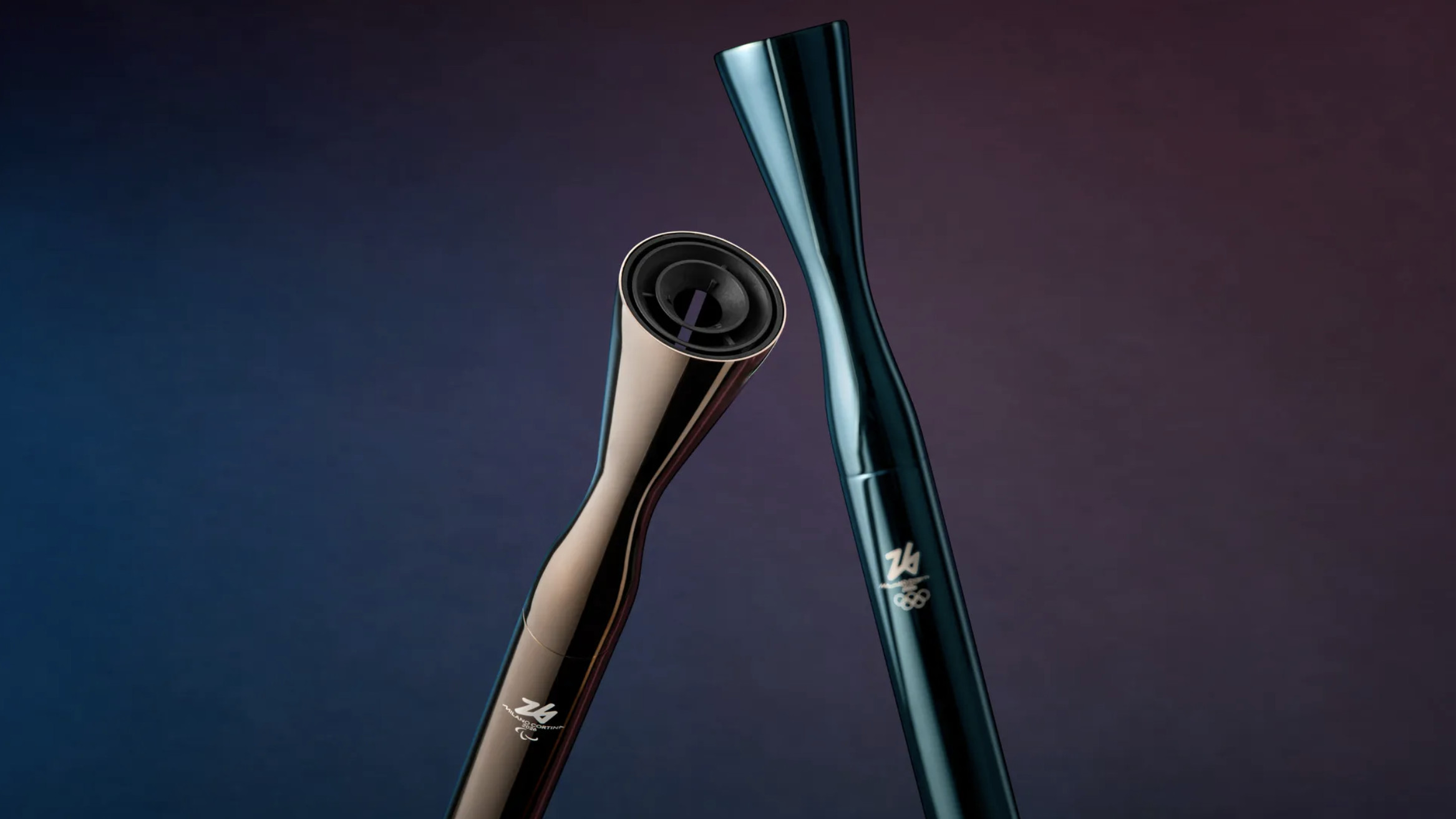 2026 Olympic and Paralympic Torches: in Carlo Ratti's minimalism ‘the flame is the protagonist’
2026 Olympic and Paralympic Torches: in Carlo Ratti's minimalism ‘the flame is the protagonist’The 2026 Olympic and Paralympic Torches for the upcoming Milano Cortina Games have been revealed, designed by architect Carlo Ratti to highlight the Olympic flame
By Ellie Stathaki
-
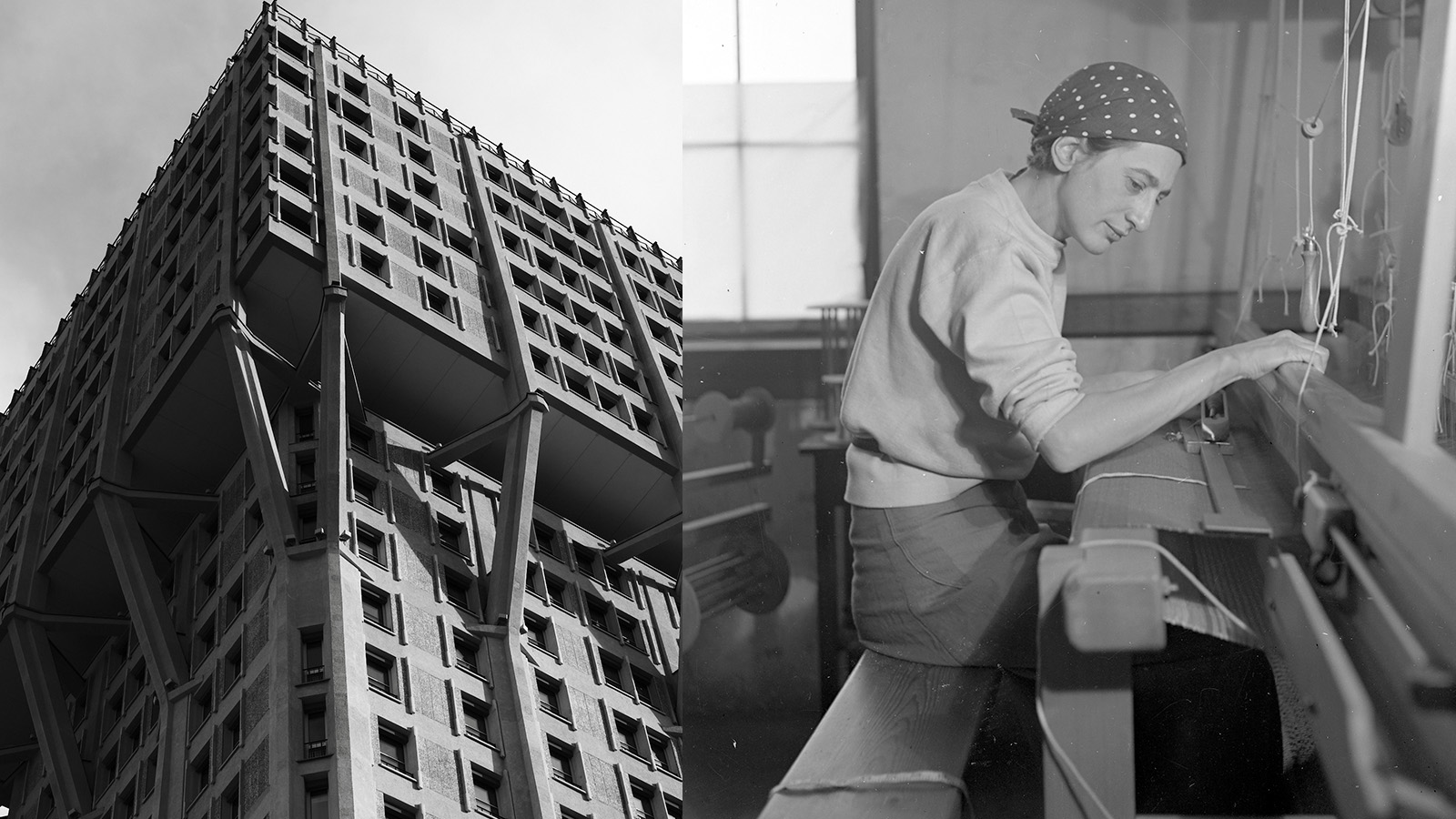 Anni Albers' weaving magic offers a delightful 2-in-1 modernist showcase in Milan
Anni Albers' weaving magic offers a delightful 2-in-1 modernist showcase in MilanA Milan Design Week showcase of Anni Albers’ weaving work, brought to life by Dedar with the Josef & Anni Albers Foundation, brings visitors to modernist icon, the BBPR-designed Torre Velasca
By Ellie Stathaki
-
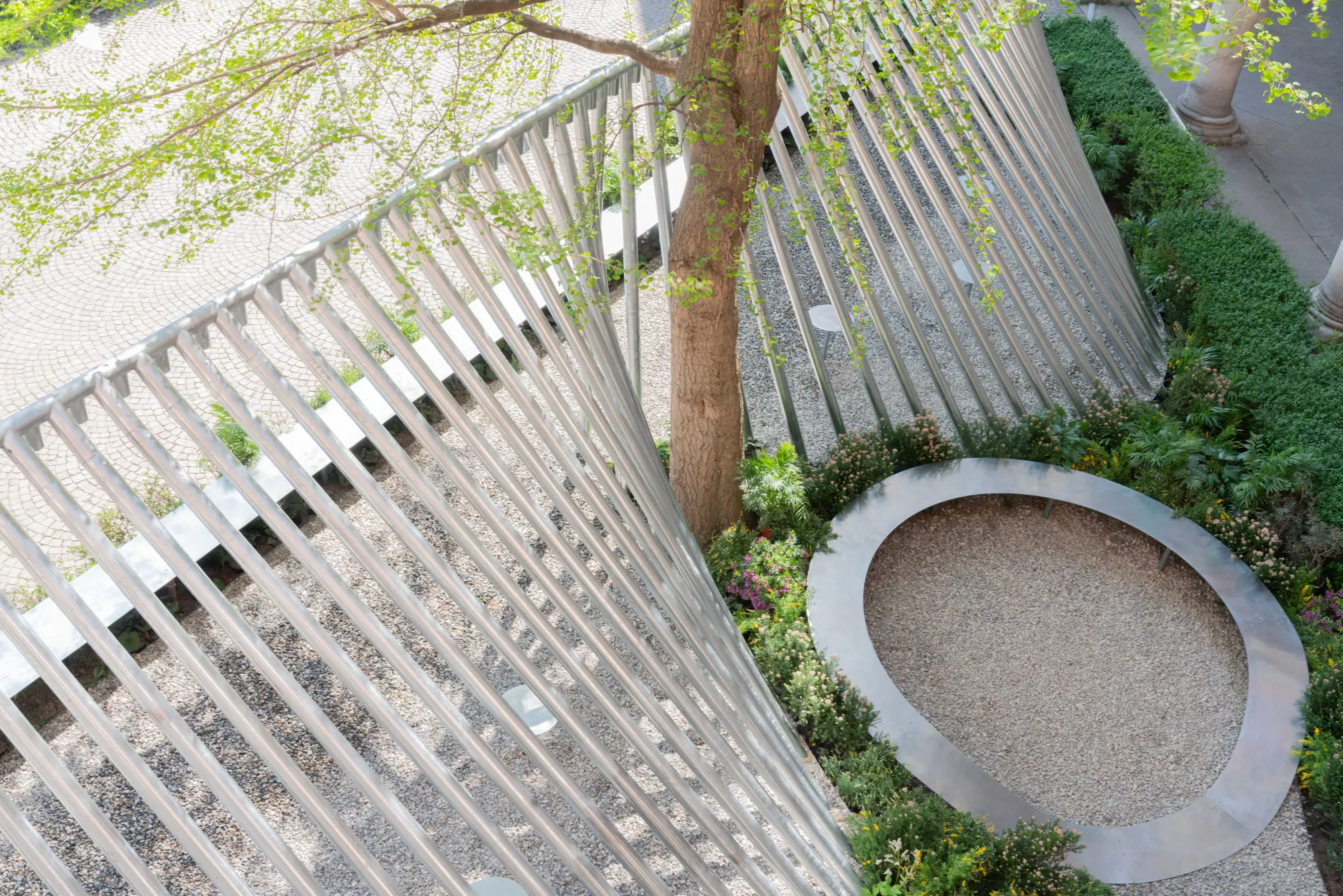 Milan Design Week: ‘A Beat of Water’ highlights the power of the precious natural resource
Milan Design Week: ‘A Beat of Water’ highlights the power of the precious natural resource‘A Beat of Water’ by BIG - Bjarke Ingels Group and Roca zooms in on water and its power – from natural element to valuable resource, touching on sustainability and consumption
By Ellie Stathaki
-
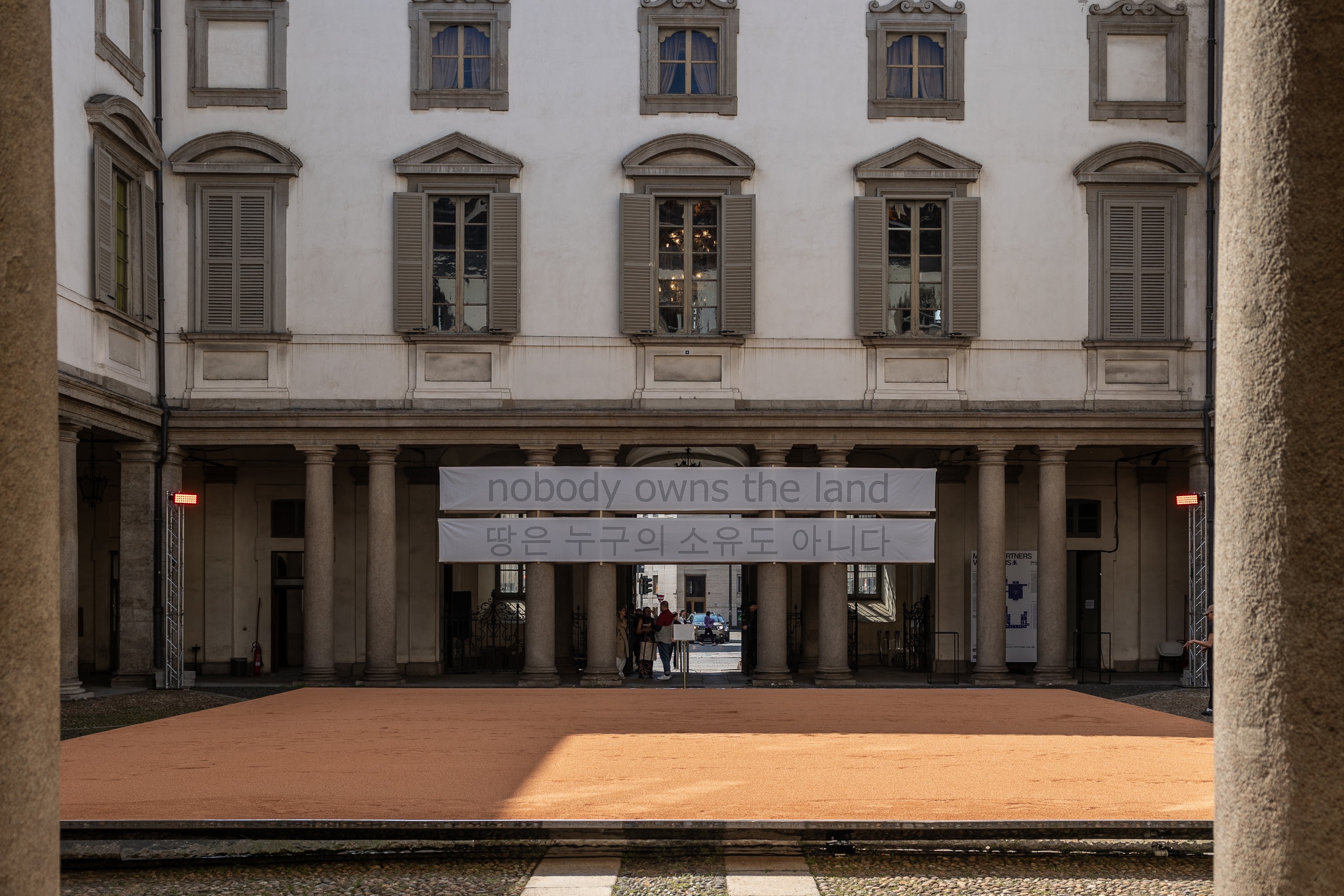 This Milan Design Week installation invites you to tread barefoot inside a palazzo
This Milan Design Week installation invites you to tread barefoot inside a palazzoAt Palazzo Litta, Moscapartners and Byoung Cho launch a contemplative installation on the theme of migration
By Ellie Stathaki
-
 The upcoming Zaha Hadid Architects projects set to transform the horizon
The upcoming Zaha Hadid Architects projects set to transform the horizonA peek at Zaha Hadid Architects’ future projects, which will comprise some of the most innovative and intriguing structures in the world
By Anna Solomon
-
 Is biodesign the future of architecture? EcoLogicStudio thinks so
Is biodesign the future of architecture? EcoLogicStudio thinks soWe talk all things biodesign with British-Italian architecture practice ecoLogicStudio, discussing how architecture can work with nature
By Shawn Adams
-
 Meet Carlo Ratti, the architect curating the 2025 Venice Architecture Biennale
Meet Carlo Ratti, the architect curating the 2025 Venice Architecture BiennaleWe meet Italian architect Carlo Ratti, the curator of the 2025 Venice Architecture Biennale, to find out what drives and fascinates him ahead of the world’s biggest architecture festival kick-off in May
By Ellie Stathaki
-
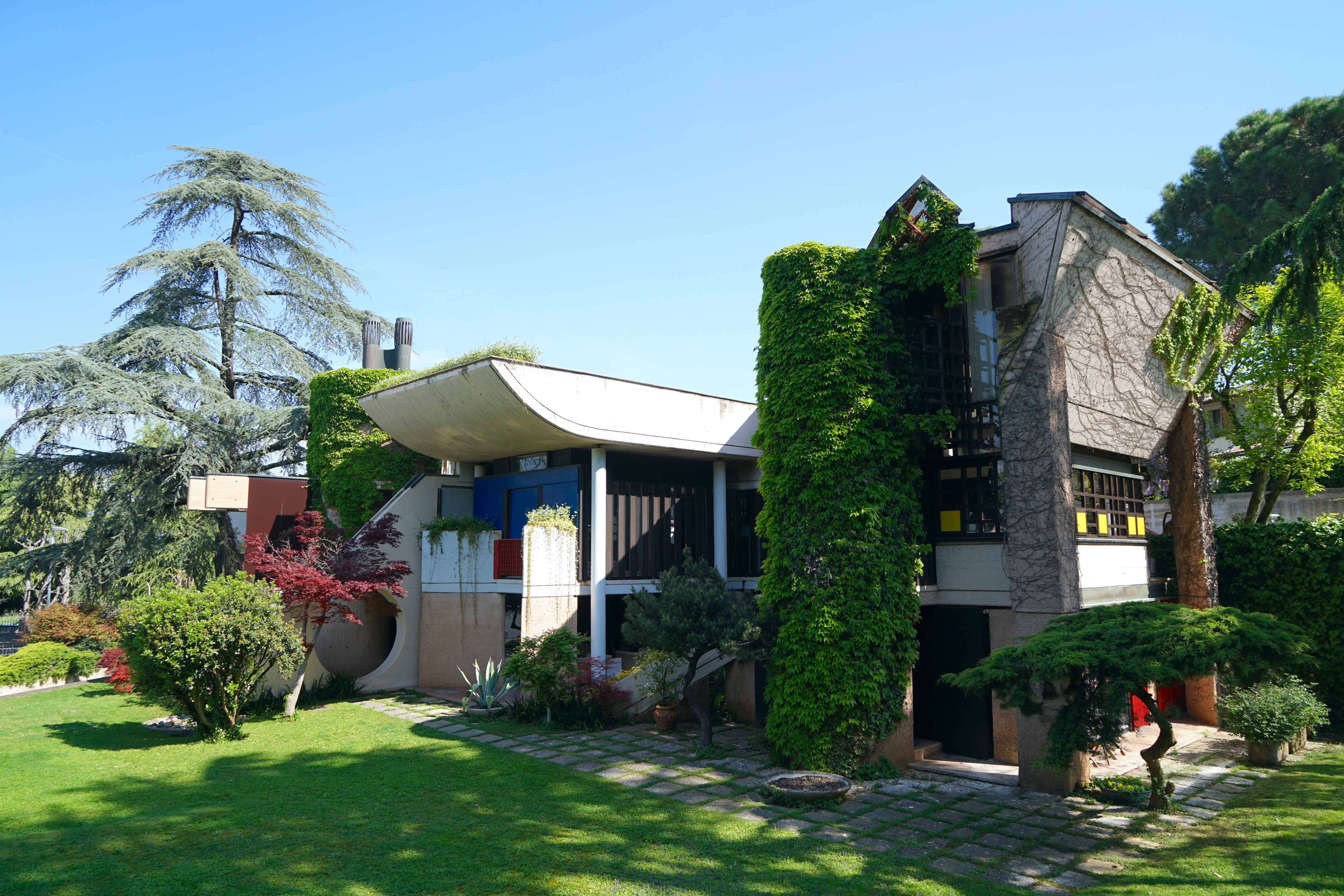 The brutal harmony of Villa Caffetto: an Escheresque Italian modernist gem
The brutal harmony of Villa Caffetto: an Escheresque Italian modernist gemThe Escheresque Italian Villa Caffetto designed by Fausto Bontempi for sculptor Claudio Caffetto
By Adam Štěch